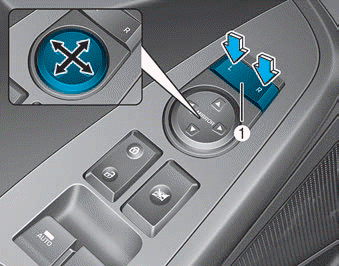Hyundai Ioniq: Why Didn't My Air Bag Go Off in a Collision? / Air bag non-inflation conditions

In certain low-speed collisions the air bags may not deploy. The air bags are designed not to deploy in such cases because they may not provide benefits beyond the protection of the seat belts.

Front air bags are not designed to inflate in rear collisions, because occupants are moved backward by the force of the impact. In this case, inflated air bags would not provide any additional benefit.

Front air bags may not inflate in side impact collisions, because occupants move in the direction of the collision, and thus in side impacts, front air bag deployment would not provide additional occupant protection.
However, side and curtain air bags may inflate depending on the severity of impact.

In an angled collision, the force of impact may direct the occupants in a direction where the air bags would not be able to provide any additional benefit, and thus the sensors may not deploy any air bags.

Just before impact, drivers often brake heavily. Such heavy braking lowers the front portion of the vehicle causing it to "ride" under a vehicle with a higher ground clearance. Air bags may not inflate in this "underride" situation because deceleration forces that are detected by sensors may be significantly reduced by such "underride" collisions.

Front air bags may not inflate in rollover accidents because air bag deployment could not provide protection to the occupants.
However, side and curtain air bags may inflate when the vehicle is rolled over by a side impact collision.

Air bags may not inflate if the vehicle collides with objects such as utility poles or trees, where the point of impact is concentrated and the collision energy is absorbed by the vehicle structure.
 Air bag inflation conditions
Air bag inflation conditions
Front air bags
Front air bags and the driver's knee air bag are designed to inflate in a frontal
collision depending on the severity of impact of the front collision...
 SRS Care
SRS Care
The SRS is virtually maintenancefree and there are no parts you can safely service
by yourself. If the SRS air bag warning light does not illuminate when the Engine
Start/Stop button is in the ON position, or continuously remains on, have your vehicle
immediately inspected by an authorized HYUNDAI dealer...
Other information:
Hyundai Ioniq (AE) 2017-2025 Owner's Manual: Climate Control Air Filter
Filter Inspection The climate control air filter should be replaced according to the Maintenance Schedule. If the vehicle is operated in severely air-polluted cities or on dusty rough roads for a long period, it should be inspected more frequently and replaced earlier...
Hyundai Ioniq (AE) 2017-2025 Service Manual: Front Door Module. Repair procedures
Replacement1.Remove the front door window glass.(Refer to Front Door - "Front Door Window Glass")2.Remove the front door outside handle.(Refer to Front Door - "Front Door Outside Module")3.Loosen the front door outside handle base mounting bolt (A). Tightening torque : 2...
Categories
- Manuals Home
- 1st Generation Ioniq Owners Manual
- 1st Generation Ioniq Service Manual
- Temperature control
- Hybrid battery SOC (State of Charge) gauge
- Washer Fluid
- New on site
- Most important about car
Side view mirror control

Adjusting the side mirrors:
1. Press either the L (driver's side) or R (passenger's side) button (1) to select the side view mirror you would like to adjust.
